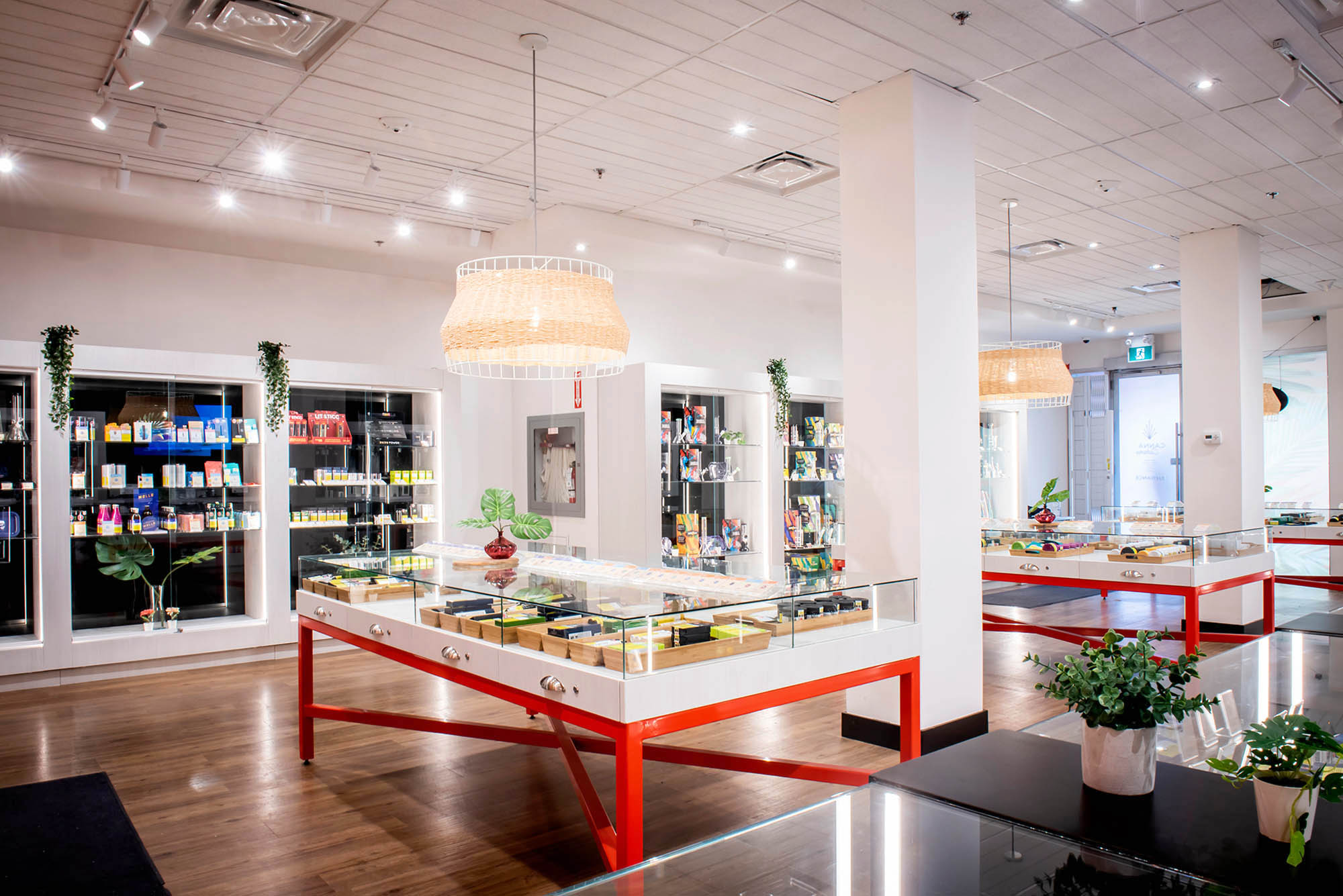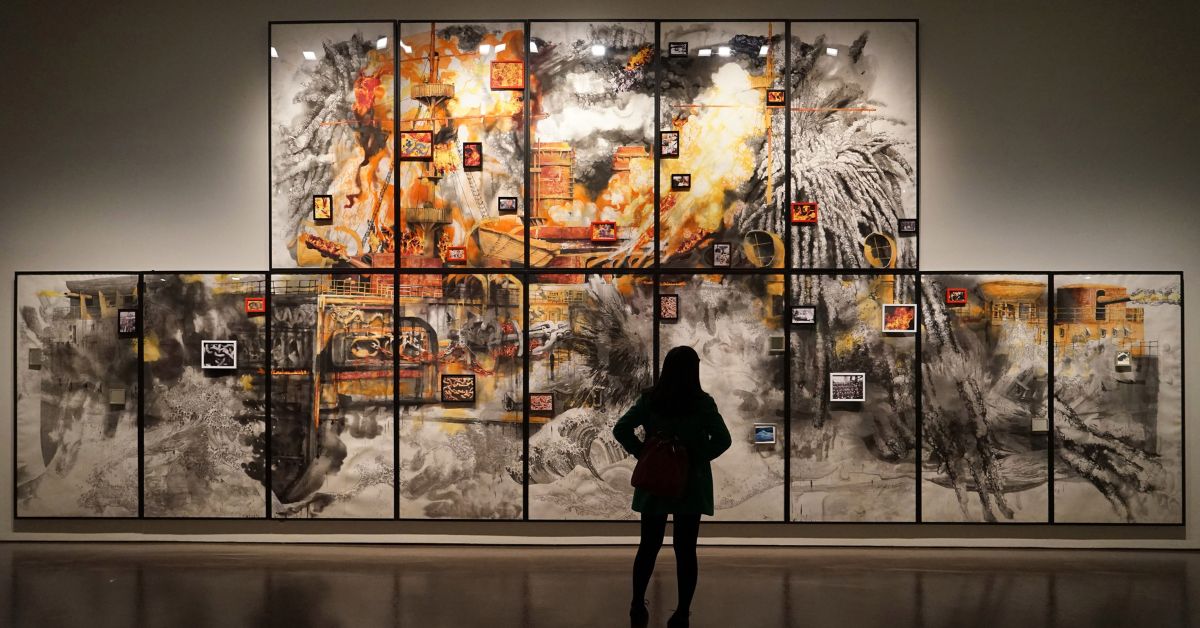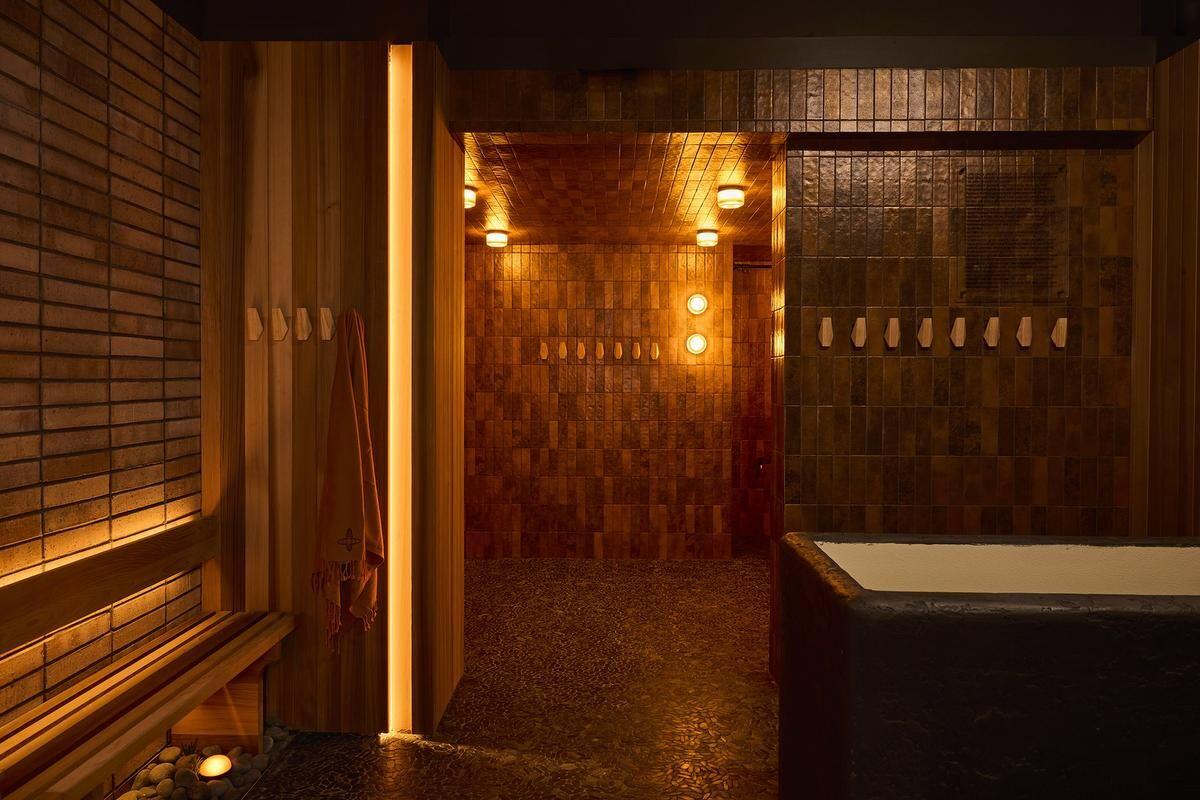High Tide is now Canada’s largest non-franchised cannabis retail chain of locations, with more than 100 stores. Leading it all is Raj Grover, an innovative leader who got his start at 22 and quickly learned the ins and outs of scale, margins, imports, teamwork, merchandising and, ultimately, weed. kind magazine caught up with Grover as he finalizes the next phase of his business plan: creating a Costco-style rewards type membership program for the more than 300,000 members who shop at High Tide stores every day.
kind: How did you get started in cannabis?
Raj Grover: I come from a family of traders. My dad is a trader. My grandfather was a trader and I learned that business early on in my life. I was in the fashion accessories industry and on a purchase trip buying body jewellery in India, when I came across consumption accessories being sold by the kilogram.
kind: So how do you go from body jewellery to weed?
RG: I was in New Delhi sourcing piercings when I came across paraphernalia—pipes and bongs—and saw an opportunity. Being a businessman, it clicked right away and I bought $10,000 worth of the stuff and shipped it back to Ontario through DHL to be sold in tourist markets in Canada.
kind: Bold
RG: Within a week, we were sold out. I made a healthy profit and was making great margins, so I kept going. This was in 2008 and I opened my first store one year later, in 2009.
kind: How’d you know it would work?
RG: It was a calculated risk, as I was one of the early guys. I’ve always been opportunistic when it came to business and when I opened Smoker’s Corner in 2009, I invested $48,000 into that store, which was just 500-square-feet with two employees—and it was successful.
kind: How successful?
RG: We went from one store to 19 by the end of 2017, and the other important part was that Smoker’s Corner Ltd. became the first franchisor in the head shop space in 2014.
kind: Lessons from that time?
RG: Well, from the earliest days: the strategy was to buy in rupees and sell in dollars. Later, it would become vertical integration. And what I mean is: once I had the stores, I began to design, brand and manufacture consumption accessories. In 2011, I launched RGR Canada with 200 SKUs. Today, we have over 5,000 SKUs in our catalogue.
kind: And these are things like pipes and bongs?
RG: Yeah, and lots of custom paraphernalia products. I approached Snoop Dogg and Paramount Pictures and convinced them to license their assets for branded consumption accessories. We were the first in the cannabis space to do licensed, branded cannabis consumption accessories with big celebrity brands.
kind: So you were already into cannabis by the time Trudeau was elected and the Cannabis Act was passed.
RG: When Trudeau came into power, I thought head shops wouldn’t survive because dispensaries will be everywhere, so what's the best strategy to proceed?
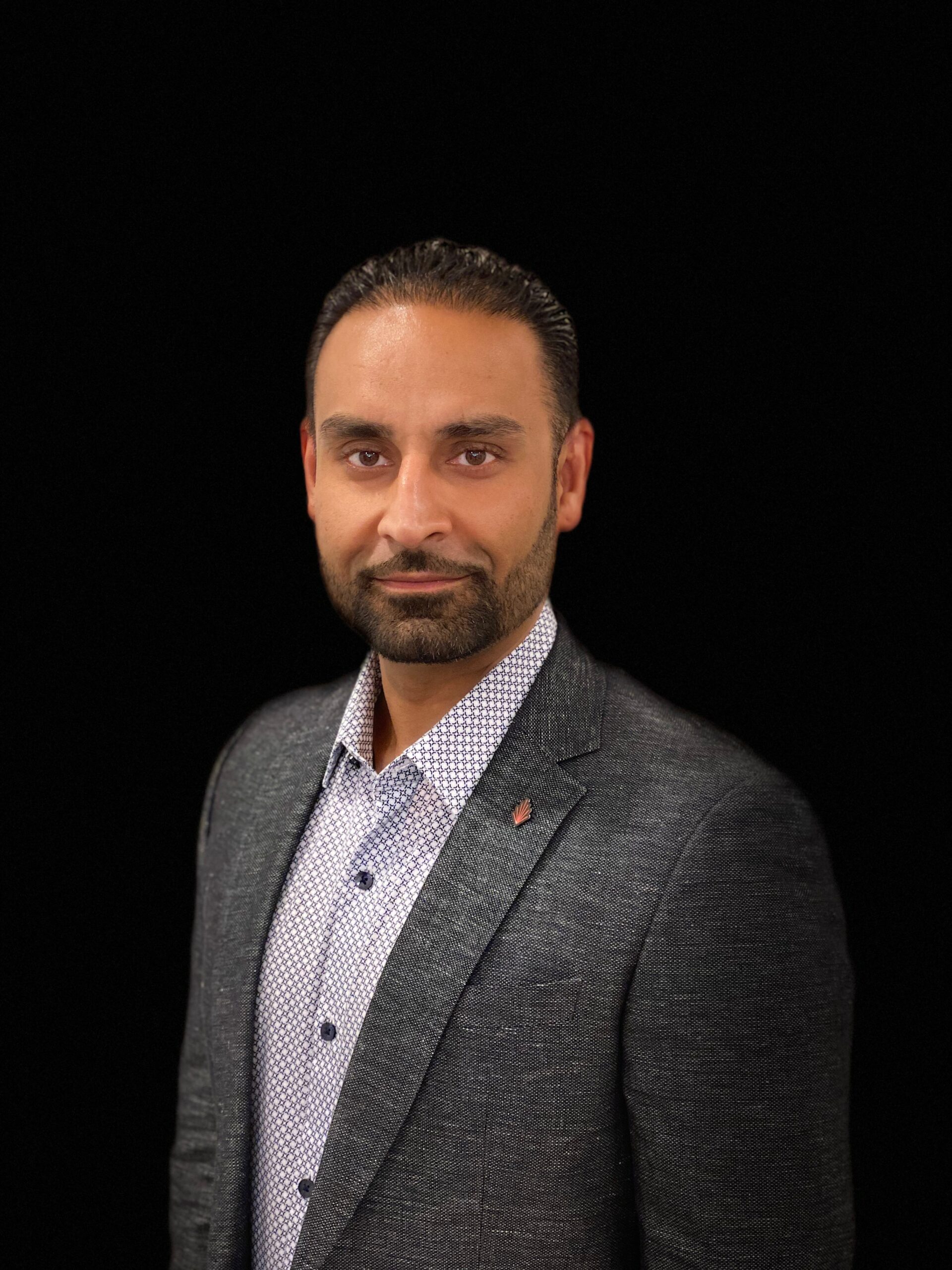
kind: Instead of selling pipes, sell weed?
RG: I decided to sell weed in addition to the accessories that I was already selling. I had an existing customer base and the same people who are buy pipes tend to be more mature cannabis users, so I plotted my moves accordingly. I needed capital and was a private businessman when I made my first runs to Bay Street and learned more about the public markets. I was fortunate enough to raise $18.5-million for my first funding round to go public on the CSE on December, 2018.
kind: It’s a cool story. You’ve been incredibly prescient.
RG: I have a good team that has always supported my vision.
kind: But you’ve just always made money.
RG: Even as a private company from 2009 to 2018, we had $9.5-million in retained earnings, which isn’t easy to do in the accessories world.
kind: In any world!
RG: Well, it was organic growth. I started with $48,000 and never raised capital until April, 2018.
kind: How old are you?
RG: 40.
kind: Wow.
RG: It’s fun.
kind: We know each other some and I know your team, Andy Palalas and Omar Khan. It’s cool that you guys are all young and smart, but also have fun with it. How do you balance work with stress with enjoying the ride?
RG:. We like the industry and love what we do. I think it helps at the end of the day.
kind: Were you ever tempted to start a licensed producer, compete with Canopy?
RG: Once, in 2013. I went so far as to get fingerprinted and I filled out an application, but I eventually walked away. I wanted to focus on retail because when I did the math, being an LP required a lot of capital, so retail made the most sense for me, and it worked out.
kind: The rollout of retail bricks and mortar cannabis stores had so many iterations. Can you talk about your ride?
RG: I remember being in China when Rachel Notley announced Alberta was going the private business route for retail. I did my happy dance in a subway enroute to Shanghai. That was the beginning of Canna Cabana—how it all started. At first, we were allowed just 37 stores per entity in Alberta, when all the big LPs and groups with capital were pushing hard to get in, and they were practically throwing money at landlords to get those leases.
kind: Canna Cabana is one of your popular brands.
RG: Yes it is—it's very popular amongst Canadian cannabis consumers.
kind: How many licenses did you get in Alberta?
RG: 37. Way ahead of everyone else. And I did this without access to capital, but I refused to pay ridiculous premiums for leases, as it was clearly not sustainable.
kind: And then there was the whole Ontario debacle.
RG: Ontario didn’t do us any favours with the lottery route, but we were able to make quick deals and secure three out of the first 25 licenses, which were very valuable, and they still are.
kind: First there weren't enough stores and now there’s too many stores in Ontario.
RG: In January, 2021, there were approximately 100 stores in Ontario. Today, that number is over 1,100. You typically need about 10,000 cannabis customers per store for it to be successful. So, there are definitely too many pot shops compared to the per-capita consumption rates. And also: almost 50% of cannabis consumers are still purchasing illicit cannabis products, so that doesn’t help legal businesses succeed, and the clustering makes it worse, especially for the independents.
kind: What would you do about the illicit market?
RG: Being a large, diversified cannabis company, we have pivoted our retail stores to a discount model, which will help shrink the illicit market. We have 105 retail locations in Canada, so we can leverage our economic strength and capital, and compress our margins in the short and medium term while setting us up for long-term success.
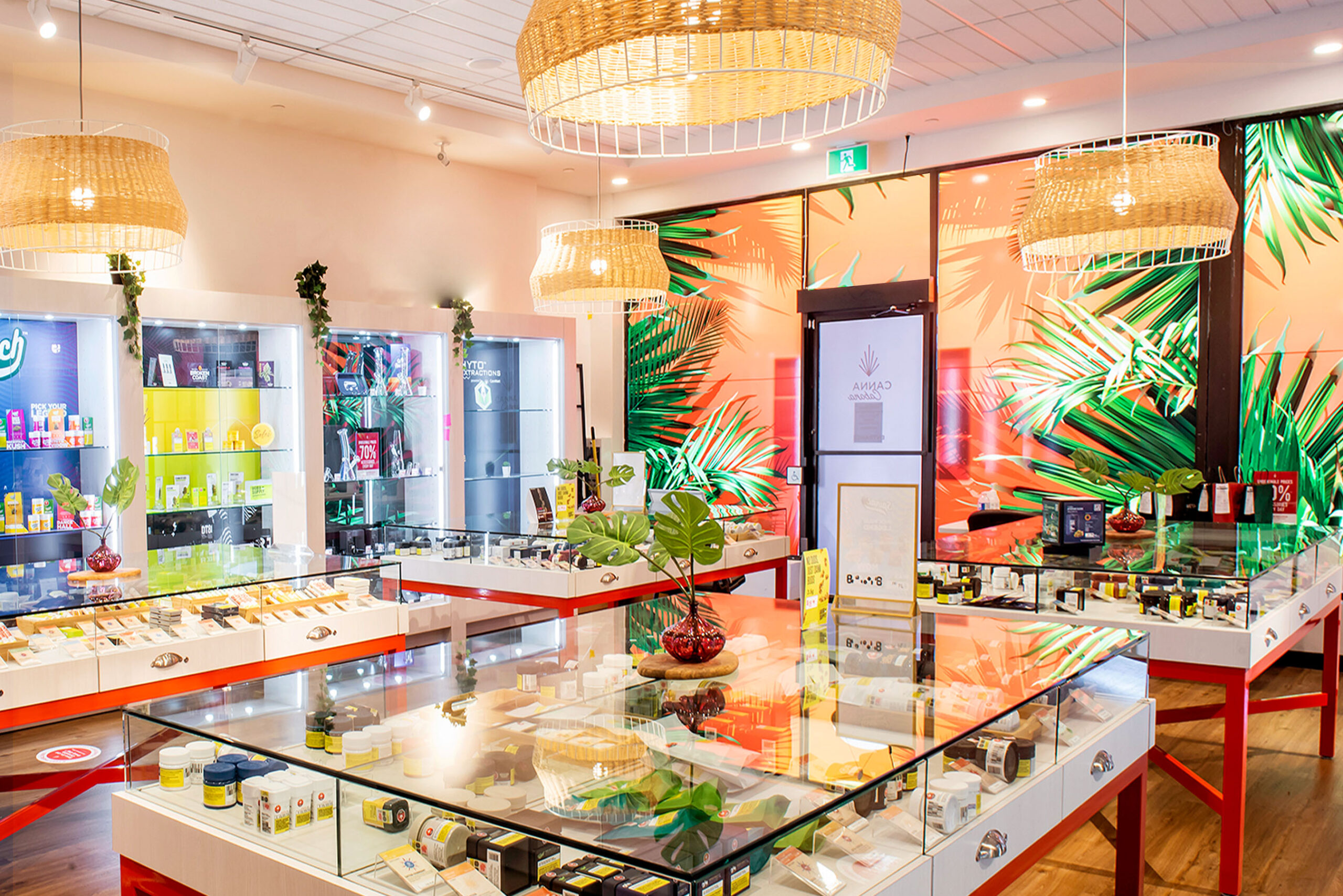
kind: You brought down your price of weed.
RG: Our prices are unheard of and unmatched in Canadian cannabis retail. We also have access to our own branded accessories that helps with customer loyalty, but my heart goes out to the independents who refinanced their home to live out their dream and are now stuck in clusters—I just don’t think the government thought through everything. But eventually the market will adjust and the operators that can sustain their operations will hang on. High Tide will be there at that time, leading the market.
kind: You’ve also made inroads in the US.
RG: We have acquired FAB CBD and other e-commerce platforms, including NuLeaf Naturals more recently in the US, and that’s part of our diversification strategy.
kind: What have you learned after all these years in weed?
RG: Listening to our customers and hiring great people is key. Retail stores should be optimized to extract the most dollars you can per square foot. In the early days, everyone wanted to build Apple stores, but this isn’t a medical dispensary and retail square footage isn’t cheap. We have learned to utilize our retail space efficiently and have customized our design to differentiate from others.
kind: What else?
RG: My dad taught me the importance of selling additional items to supplement the core business. You don’t want more capital expenditure, but you want to expand your product line. As we are selling the same cannabis as other retailers, what has differentiated us, since day one, was our accessories. Our moat is that we are offering our members more to purchase through our exclusive and proprietary accessories selection at unbeatable prices.
kind: Let’s end things on your latest iteration—your membership program.
RG: We went the Costco way just like with their Kirkland model: we make our own in-house accessories brands and products that we can offer at significant discounts to our members.
kind: Is there a price for a High Tide membership?
RG: Not yet, but we have an opportunity to monetize that, for sure.
kind: Is retail eventually going to vertically integrate their weed?
RG: It makes sense for players with size and scale to go the white label route, and in regards to this, we announced our own branded gummies and shatter earlier this year, and will soon expand to pre-rolls, vapes and other products. We could’ve accelerated the pace to launch more products this year, but there are a billion grams of cannabis sitting in Canadian LP vaults, and for me to compete with the LPs with my own branded flower did not make sense.
kind: Not yet.
RG: As time passes, our discount club concept will offer a larger selection of unique products for members, and we’ll curate that retail experience. We have the data to analyze the best-selling SKUs and are able to cherry pick and introduce them as Cabana Cannabis Co.-branded products.
Kind: Raj Grover, CEO of the Costco of Weed. My cousin is obsessed with Costco and I’m sure will want to shake your hand.
RG: I would be happy to meet your cousin and shake his hand. We’re perfectly positioned to become the go-to cannabis discount retailer. We make approximately 75% of the accessories we sell, and also own CBD brands in the US and UK. We can bring these brands that we own to Canada, and offer an exclusive selection to our members at unbeatable prices; we have a value prop that no other cannabis retailer in North America has.

